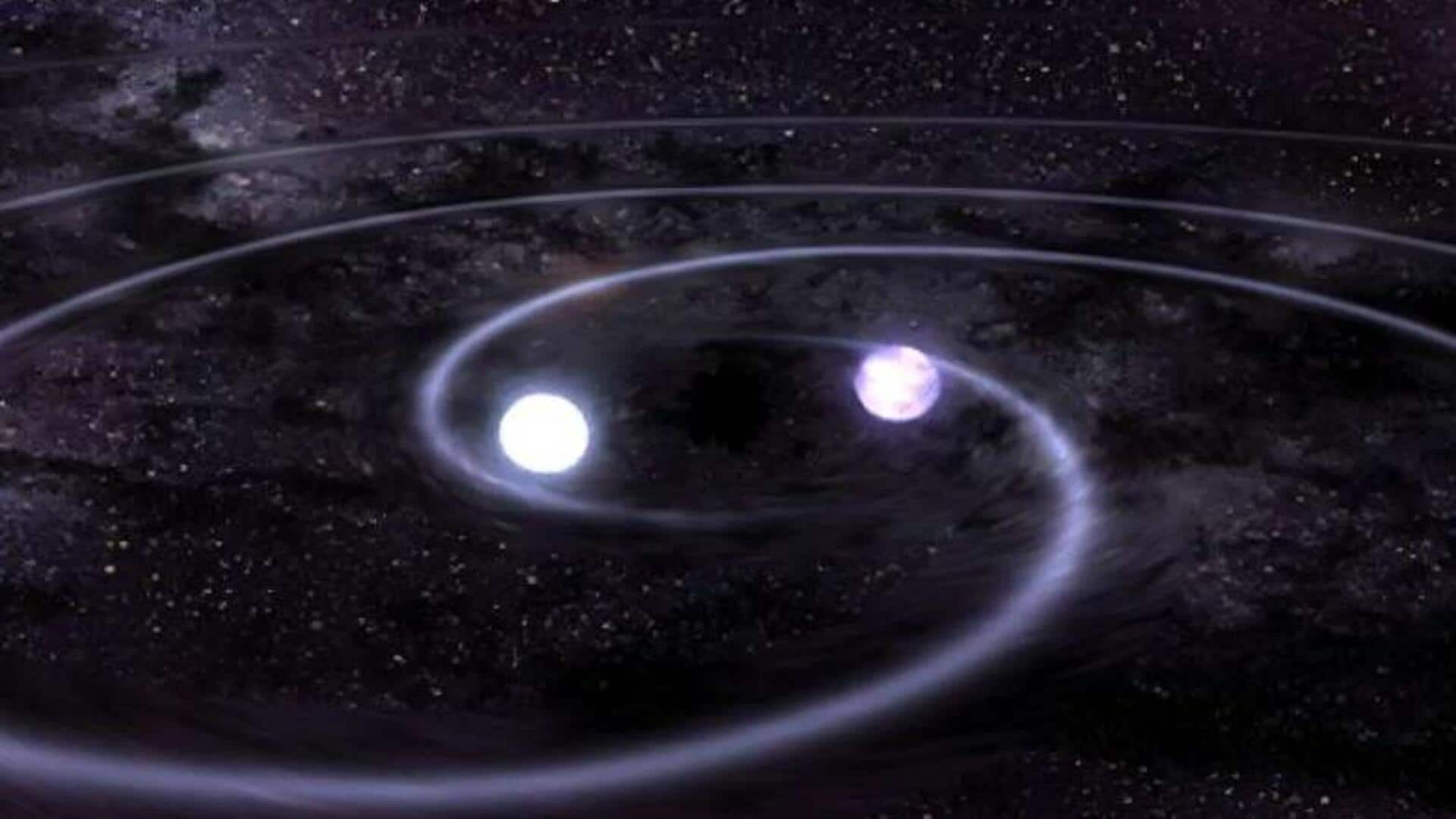
Watch: Astronomers find a mysterious white dwarf emitting radio signals
What's the story
A team of astronomers has discovered a white dwarf star that belongs to a rare class of objects known as long-period transients (LPTs), of which only 10 are known to date. The discovery was made using the advanced Low Frequency Array (LOFAR) radio telescope in the Netherlands. The star system, called ILT J163430+445010 (or J1634+44 for short), is located over 3,500 light years away from Earth.
Anomaly
A unique pattern in the star's radio emissions
The star system J1634+44 isn't just special because it emits radio signals, but also because of the peculiar behavior of those signals. Every 14 minutes, this 'dead' star sends out radio pulses with a strange twist. Some of the waves rotate in circles while others vibrate in straight lines. This rapid switching between different types of polarization has never been observed in any white dwarf before.
Evolution
What is a white dwarf?
To understand why this discovery is so important, we need to know what a white dwarf is. When a star like our Sun reaches the end of its life, it sheds its outer layers and leaves behind a hot, incredibly dense core—this is called a white dwarf. These stellar remnants are usually about Earth's size but have as much mass as our Sun. They are normally quiet objects that just cool down over billions of years.
Stellar characteristics
High temperature and possible companion star
The newly discovered white dwarf is extremely hot, with surface temperatures between 15,000-33,000 degrees Celsius. This is much hotter than our Sun's photospheric temperature of 5,500 degrees. The unique feature of this star isn't its temperature but its ability to produce strong radio emissions. These pulses come in pairs after the star has spun around several times without producing any detectable signals. This behavior suggests that the white dwarf might have a companion—possibly another dead star or a brown dwarf.